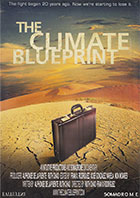
Climate Blueprint 2013
Distributed by Green Planet Films, PO Box 247, Corte Madera, CA 94976-0247; 415-377-5471
Produced by Ruth Chao, Alphonse de lad Puente (Intuitive Productions and Somadrome)
Directed by Ruth Chao, Fran X. Rodríguez
DVD , color, 52 min., Closed Captioned
High School - General Adult
Climate Change, United Nations
Date Entered: 12/08/2015
Reviewed by Bonnie Jo Dopp, Librarian Emerita, University of MarylandUsing urgent, intense background music and dramatic images of collapsing ice shelves, forest fires, and ocean waves washing over roads, this program states its main message early. Regarding the rapidity of earth’s changing climate, “We have no choice but to adapt to what is already inevitable and here, and to mitigate, as far as possible, what is still to come.”
Viewers who cannot quite recall the meaning of the acronyms COP (Conference of the Parties), UNFCCC (United Nations Framework Convention on Climate Change), IPCC, WMO, and UNEP will learn about them here, brought to life not only by individual spokespeople (academics, lobbyists, government employees) who inform, work within, or aim to influence these international groups but also by video clips of dozens of people from nearly 200 countries working together during periodic conferences.
Climate Blueprint includes basic information about why the earth is warmed by its atmosphere and how it is now running a fever, as dangerous to the health of the planet as an unremitting rise in body temperate is to individual living beings. It also repeats variations on the theme that humans are responsible for this, so humans must find a solution.
We see how the UNFCCC works, with not only political leaders, but delegates including technicians, observers, and negotiators getting down to talking with each other and hammering out some kind of consensus. Difficulties inherent in agreeing about what to do include inequity among countries’ level of development. Also, some countries, such as those comprising low-lying islands, are more obviously vulnerable to climate crises than others. The points that people need to take an integrated view of the world and aim for a positive attitude that humanity will somehow find a way to both adapt to climatic changes that are already happening and mitigate against making those changes worse are made again and again.
Jason McCoy clearly reads an information-packed script and numerous international characters speak in a variety of English accents contributing even more details, so the closed-captioned feature aids understanding even for people who may not have hearing loss.
This program would be useful for any teacher instituting or already supporting a Model UNFCC program in an English-speaking high school or college. Upper-level students of international relations need to understand this material as well. Mention is made of the December 2015 COP21 meeting in Paris and people who aim to understand what happens there, will profit from reviewing the efforts made over the past 20 years that this film provides.